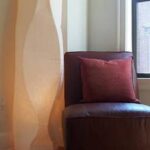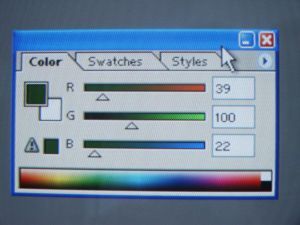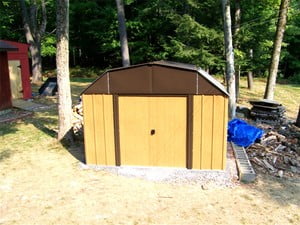If your new to photo editing and would like an easy way to change the background on a photo, gimp is a great way to do just that. While I like some of the things Adobe Photoshop has to offer, the best part about gimp is that it is completely free and the interface in a lot of ways is easier to understand. With this easy gimp tutorial you will be able to change the background color of your photos in no time.
Changing picture background
When deciding to change the background color of a photo you need to ask yourself what you are trying to accomplish. People like to change the background color of their photos for all sorts of reasons, but often times it’s to change the time of day or to give the photo a sort of artistic touch. For this tutorial on gimp I am going to show you step by step how I change the background color of a forest set in the daytime to appear more in a dusk setting.
Adjust your color levels
The first step to changing the background color of your photo is to adjust your color levels in gimp. To do this you will need to go to your navigation bar in gimp and select the tab entitled “colors”. After selecting this you will want to go down until you see a subcategory entitled “levels” and click it. (See image one) Once you have selected this category a small box will appear with a graph that looks like a dark shaded mountain. This graph is a representation of your color and lighting levels in the photo and is what will allow you to alter the amount of color and lighting present in the photo you are trying to edit. In order to give the image a more dusk look I want the amount of light coming into the photo to be less than is currently being shown. To do this, drag the triangle down the graph until the right amount of light is showing as seen in the second image. As you can see from the image I started with, the amount of light that is showing through the trees has decreased drastically and there is more of a glow effect in the foreground. The best part of this effect is that the trees as well as the background have changed to a slightly darker hue to reflect the reduction in the amount of light that is present.
Adjusting brightness and contrast
The next step to creating a dusk forest setting is to adjust your brightness and contrast. While you have already limited the amount of light that is present in your photograph, you will want to also limit the amount of intensity that the light produces. This technique as well as the first step will work with any image and is the quickest way to alter your setting and time of day of an image. In order to soften the light present, return to the colors tab and select the subcategory entitled “Brightness and Contrast”, an example of this step is present in image three. Once selected a small box will appear with two sliding bars for both your brightness and contrast. In order to create a dusk setting I needed to drag the brightness as far as possible, but the amount of brightness as well as contrast will depend on the particular image or photo that you are working with. Slide the bars until you have created the right amount of lighting. Press okay to complete the process. If your effect is to dark or not dark enough you can go up to edit and undue the previous step.
Adding lighting effects
When in a forest at dusk the light that is present tends to fall through the trees slightly and collect in spots on the ground. In order to create this effect we will need to change the focus of the light to be more in one corner of the image and on the ground. To do this go to the tab entitled “filters” and select lighting effects. Once there a small box will appear with a small preview of your image. Go to the tab entitled material and turn the shiny feature all the way to zero and adjust the glowing feature and bright feature until it properly represents the amount of lighting that you desire. For a dusk forest setting you will want the focus of the light to be towards the bottom and one corner of the trees to simulate a setting sun passing through the trees. (See image number five) Once all of these steps have been completed you will go from an image of a forest in the daytime to an image of a forest right at dusk as is represented in the final photo.This process will work for any photograph and the amount of adjustment needed will depend on the time of day you want to represent and how much light is present in the original photo.







